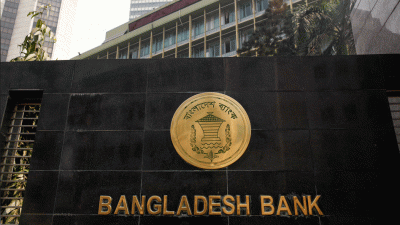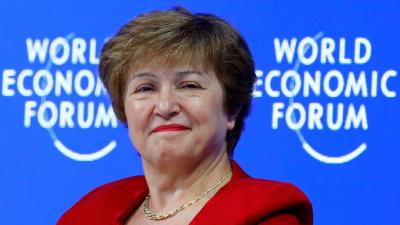 Bangladesh may have a negative balance of trade with India in bilateral transactions. But when it comes to border trade between the two countries, the story is somewhat different: Bangladesh enjoys a hefty surplus while trading with Northeastern states like Tripura or Meghalaya.
Bangladesh may have a negative balance of trade with India in bilateral transactions. But when it comes to border trade between the two countries, the story is somewhat different: Bangladesh enjoys a hefty surplus while trading with Northeastern states like Tripura or Meghalaya.
The irony is that while policymakers in Dhaka should have laid greater stress in increasing trade and business volumes in their immediate neighbourhood, concentrating on the NE states, somehow it has not happened. Instead, countries like Bhutan and Myanmar have proved more enterprising and increased their share of overall trade with NE states.
Bangladesh enjoys a major advantage in such trade because most NE states, especially Assam, Meghalaya and Tripura, have indicated their willingness to do more business with it. The region as a whole has had close historic ties with undivided Bengal in the past.
To give only two examples, Assam Chief Minister Sarbananda Sonowal called upon Bangladeshi investors to look at business opportunities in the region. During the recent economic summit of ASEAN countries in Guwahati some time back, Sonowal as well as other leaders welcomed the establishment in Guwahati of a Bangladeshi consulate. The move was seen as a big help to entrepreneurs from NE states to interact with Bangladeshi officials, avoiding time loss and reducing bureaucratic procedures.
More recently, Tripura Chief Minister Biplab Kumar Deb told Delhi-based officials and Central Ministers that during 2016, trade and business with Bangladesh amounted to Rs 305 crore, of which Tripura’s share was only Rs 4.60 crore! In this context, to reduce the large deficit, he proposed the immediate withdrawal of present restrictions on 27 new items that Tripura could sell to Bangladesh, as a remedy. He was also unhappy that instead of buying pineapple from his state as before, Bangladesh was now sourcing it from West Bengal.
Some time ago, another study pointed out that in recent years, border trade between Bangladesh and Meghalaya showed a near ten- fold superiority for Dhaka in bilateral transactions!
Given such favourable conditions, Indian analysts find it difficult to fathom the reason for the apparent lack of interest among Bangladeshi policymakers when it comes to expanding their country’s economic participation within the region. The outcome has not been positive.
The figures tell their own story: According to statistics provided by India’s Commerce and Industries Ministries, the volume of Indo-Bangla trade was Rs 69271.31 lakhs in 2009-10 and by 2013-14; it had risen to Rs 79149.38 lakhs, registering a growth of 4.60%.
However, the share of Indo-Bangla Trade fell sharply during this period in the overall context of India’s total trade in the NE region. Indo-Bangla trade in 2009-10 accounted for 91% of India’s total trade in the NE region, but by 2013-14 it had declined to 41.86%, as economic transactions increased substantially between India and countries like Myanmar, Bhutan and Thailand. ‘Given the warm relationship between Bangladesh and India in recent years and steps taken in both countries to accelerate economic development and co-operation, this is somewhat surprising, to say the least,’ says Kolkata-based analyst Charubrata Ray.
There is some new thinking in India about utilising better the rich economic potential or border trade. It is being suggested that the long 4096 kilometre long border separating India and Bangladesh need not be treated as a disadvantage. Instead it should be taken as a major opportunity: both countries should look at opening more border ‘haats’ , open up more trade and business routes, study and pinpoint the economic potential of different regions and the agricultural and other production thereof, to work out a comprehensive development blueprint for the future.
The ongoing road/rail connectivity infra schemes being carried out under the BIMSTEC initiative and India’s ACTEAST programme, together with Thailand’s Look West project, the BBIN and BCIM ventures should help in bringing together major countries like China and the advanced ASEAN Bloc in a closer, mutually beneficial economic integration.
Among major steps taken in India so far is the recent expansion of cargo handling capacity of the Guwahati airport, from 150 square metres to 4050 square metres and the construction of the 9 kilometre long bridge linking Assam with Arunachal Pradesh. There is a move to develop Guwahati airport as an aviation hub for the NE region.
To develop new road trade routes, there is a proposal to extend to Dhaka the existing roadway linking Silchar with Agartala. Instead of maintaining four border ‘haat’ outposts between India and Bangladesh --- two each for Meghalaya-Bangladesh and Tripura Bangladesh borders--- there could be more such outposts. There is considerable potential to increase the volume of bilateral trade from such points. During 2015-16, the border markets between Tripura and Bangladesh generated business to the tune of Rs 17 crore, despite lack of good facilities and poor connectivity. In using the river route, the development in Bangladesh of Chilmari as a reporting point for vessels was also proposed in bilateral talks.
The other major conclusion that emerges is that there should be greater stress laid on agriculture and agro-products when it comes to developing Indo-Bangla trade. A reference has been made to the significant increase in bilateral trade between Bhutan and India. In 2009-10, bilateral trade between the two countries amounted to Rs 4580 lakhs, rising to Rs 60340 lakh in 2013-14: an increase of 36%.
Interestingly, much of this trade from either side was carried out in terms of bulk buying and selling of basic items such as rice, wheat, vegetables, nuts, spices, wood and related items, potatoes, cardamom, fruits and fruit-based products! True, there was also a demand for auto parts, electronic goods and medicines etc but not in bulk!
Food for thought here?
 Business
Business
41045 hour(s) 23 minute(s) ago ;
Midnight 12:18 ; Monday ; Jun 23, 2025
Trends in Bangladesh-Northeast India border trade
Send
Ashis Biswas, Kolkata
Published : 02:00, May 30, 2018 | Updated : 02:00, May 30, 2018
Published : 02:00, May 30, 2018 | Updated : 02:00, May 30, 2018
0 ...0 ...
/hb
Topics: Top Stories
- KOICA donates medical supplies to BSMMU
- 5 more flights to take back British nationals to London
- Covid19: Rajarbagh, Mohammadpur worst affected
- Momen joins UN solidarity song over COVID-19 combat
- Covid-19: OIC to hold special meeting
- WFP begins food distribution in Cox’s Bazar
- WFP begins food distribution in Cox’s Bazar
- 290 return home to Australia
- Third charter flight for US citizens to return home
- Dhaka proposes to postpone D8 Summit
Unauthorized use of news, image, information, etc published by Bangla Tribune is punishable by copyright law. Appropriate legal steps will be taken by the management against any person or body that infringes those laws.
Bangla Tribune is one of the most revered online newspapers in Bangladesh, due to its reputation of neutral coverage and incisive analysis.
F R Tower, 8/C Panthapath, Shukrabad, Dhaka-1207 | Phone: 58151324; 58151326, Fax: 58151329 | Mob: 01730794527, 01730794528






